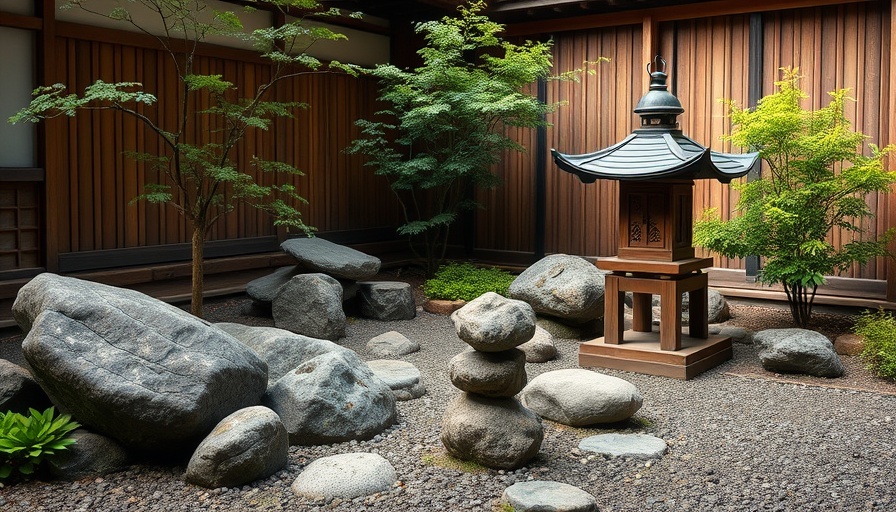
Creating Your Own Sanctuary: The Appeal of a Zen Garden
In today’s fast-paced world, cultivating a space where tranquility can flourish is more critical than ever. A Japanese zen garden offers a perfect sanctuary to escape the hustle and bustle of daily life. It encourages introspection and serenity through its minimalist elements, carefully selected plants, and flowing water features. For garden enthusiasts, there’s a unique opportunity not just to beautify an outdoor space, but to create a personal oasis that revitalizes the mind and soul.
In Transforming Backyard Into Japanese Zen Garden | Great Home Ideas, the discussion explores key insights into designing a tranquil outdoor space, prompting us to share deeper analysis and practical tips for creating your own sanctuary.
Transforming Your Backyard Into a Tranquil Retreat
With a little creativity and careful planning, a backyard can be transformed into a stunning Japanese zen garden, even for those who feel they lack the green thumb. As featured in the video Transforming Backyard Into Japanese Zen Garden | Great Home Ideas, the project begins with defining the garden’s purpose. Consider the dimensions of your yard and visualize how to best utilize space for relaxation, water features, and plant life.
Aiming for minimal maintenance? Consider ground covers such as mondo grass or moss that thrive underfoot while requiring little attention. To enhance the peaceful vibe, adding boulders or stepping stones can help guide visitors through a meditative landscape. Prioritize low-maintenance plants like Japanese maples, which not only connect visually but also invite a sense of tranquillity.
Key Elements of a Japanese Zen Garden
When designing a zen garden, think beyond aesthetics and focus on cultivating a specific atmosphere. Begin with a calming color palette that balances greens, browns, and greys. Landscape rocks, placed intentionally, provide structure and guide energy flows within the garden space, a concept central to Zen philosophy.
The calming sounds of flowing water also play an essential role in achieving that peaceful ambiance. Incorporating a water feature, like the simple yet effective designs suggested in the video, can enhance the sensory experience significantly. With careful consideration, even minimal gardening efforts can yield profound relaxation and a deep sense of tranquility.
Connecting Nature With Your Inner Peace
The beauty of a zen garden is not solely in its visual appeal but in its therapeutic benefits. Each element, from the way the stones are placed to the selection of plants, is geared towards promoting a peaceful state of mind. As the project demonstrated, islands of calm can be crafted in suburban areas, allowing homeowners to escape the chaos without leaving their properties.
Research has shown that spending time in nature reduces stress and boosts overall well-being. Therefore, creating a space where you can breathe, unwind, and connect with nature is profoundly beneficial.
Practical Tips for Your Zen Garden Journey
Here are five essential tips to keep in mind as you embark on your zen garden project:
- Plan Your Space: Determine the size of your garden and map out where each feature should go. Remember, the goal is serenity, so avoid overcrowding.
- Choose Low-Maintenance Plants: Opt for hardy plants like succulents, which require minimal maintenance, freeing up more time to enjoy your garden.
- Incorporate Natural Elements: Use rocks, gravel, or sand to create textures and contrast, forming pathways or dividers in your design.
- Add Water Features: Simple basins or small fountains can provide that soothing auditory element, mimicking natural streams.
- Lighting and Decor: Soft lighting can enhance nighttime tranquillity while carefully placed garden decor, like lanterns or statues, can add personality to your sanctuary.
The Emotional Impact of a Zen Garden
Creating a zen garden can serve as a therapeutic outlet. As seen in the video, the transformation drew out emotions of joy and peace from the homeowners, highlighting that gardening is more than just landscaping; it’s a form of self-care. The act of planning, planting, and maintaining fosters a deep connection with one’s environment, instilling a sense of accomplishment and pride.
As you immerse yourself in the tranquil world of gardening, you simultaneously cultivate not just flowers but lasting memories and relationships with loved ones. Whether through quiet contemplation or playful moments with grandchildren, a zen garden truly enriches life.
Conclusion: Embrace the Zen
Whether you're looking to dive into garden design for the first time or enhance your existing outdoor space, creating a Japanese zen garden yields beautiful results that prioritize personal wellness. The tips and insights shared from the Transforming Backyard Into Japanese Zen Garden video provide encouragement and actionable steps to foster a favorable gardening experience.
This isn't just about planting flowers or weeding techniques; it’s about building a lifestyle focused on peace, mindfulness, and connection with nature. Start your journey today and watch as your backyard transforms from a mundane area into a vibrant landscape of calm.
 Add Row
Add Row  Add
Add 




Write A Comment